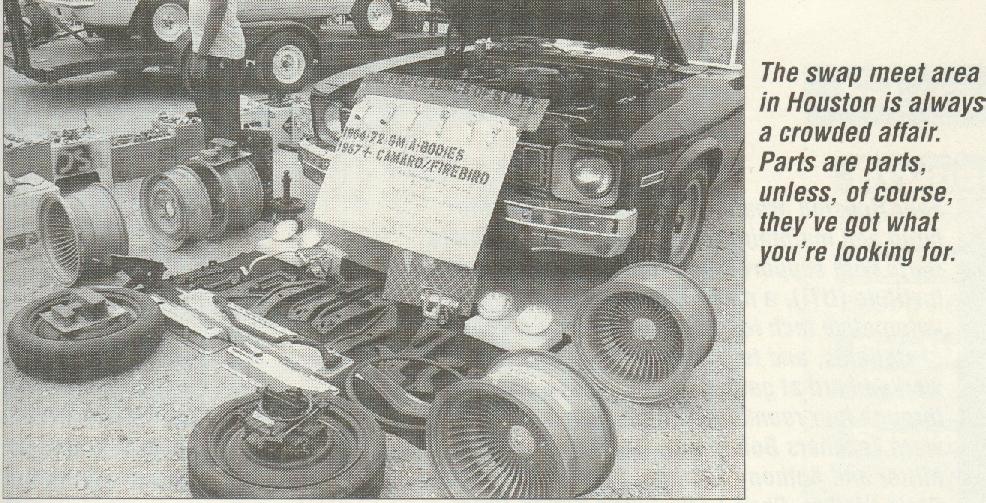
After tearing down the second motor, the forensic evidence (censored and unavailable) was more horrifying. The #2 cylinder wall had been windowed, and the entire piston in the #2 bore was fragmented. There were 3 bent connecting rods on cylinders 8, 3, 5, and a twisted and splintered rod on cylinder #2. The other 4 rods were undamaged, and straight. Only 6 of the pistons (KB120 .040+) remain, and the right side cylinder head (seen in the above photo) was totaled. The second motor logged 36,000 miles, and this event has sent the Nova to its early retirement.
During the 3 month hiatus, the second motor was built, but there was a tight schedule in which I was limited to use my dad's Blazer to purchase new parts. I ended up purchasing a 350 cylinder block from a local swap meet that was cancelled, in which I spent $50 for a block and crank. The block used for the second 350 was a 1979 core, with a lot of core shift. I managed to reuse several parts, like the crank, oil pan, oil pump, and heads. One mistake that was a result of negligence was when the block was machined, the cam bearings were not installed, and I had to purchase new bearings and install them myself. This was a futile attempt, since I did not have the proper tool to install the cam bearings. If the engine shop installed the new cam bearings, along with the needed small parts (e.g freeze plugs, et.al), this motor would have been alive today. This flaw is a form of vicarious liability, because several procedures were not adhered to, and burnt less than $1000 for the second attempt.
A new 350 is under construction, but there is a lingering debate in which the motor should be installed. Legal issues on ownership and titling rights are at stake here, as well as a refurbishing project that involves body panel replacement and upgrades are on hold since the engine was grenaded, due to my graduate studies and busy schedule. I have been skeptical on the motor issue, in which the motor and tranny are mine, but will go into a different car body.
When building the second motor, my mom was against my wishes, since SHE wanted me to purchase a pre-assembled motor. I wanted to have another shot of building the motor myself, which I did, and is halfway complete to this day. I could argue prior restraint for the act that I did, since I located a mid-1970s core, which came from a 1975 Bel Air sedan.
To this day, $8000 (average) was spent on the Nova, dating back to the late 1970s. My share of spending costs was $2200, with an additional $600 from other sources (tires, A/C service, front end alignment, body and paint, et.al). I wanted to have a 1968 Chevelle hardtop as the replacement vehicle, but my mom was against my wishes because of (1) I do not have a legitmate form of employment, which paychecks and paying taxes every April 15th of each calendar year is the norm, and (2) she does not want to invest in a classic vehicle and spend any dime on such project, due to maintenance expenditures. She has invested $6000 on this car, but this debate has denied my chances of becoming an owner of a classic A-car.
My rebuttal: (1) denial of owning a 1968 Chevelle hardtop constitutes prior restraint, and (2) limits vehicle choice as a form of free exercise. Since then, I am ordered not to mention any references of a 1968 Chevelle as a vehicle in the household, and this constitutes a form of prior restraint. The only exception to this rule is that I should be legitimately employed full-time and earning legitmate income and pay the income tax every April 15th of each calendar year. Another issue is that I cannot park a project vehicle in the driveway, since the City of Houston has an ordinance on inoperable motor vehicles. I do not like to have HPD serving a citation for an inoperable motor vehicle, and this is why I have given up on locating the 1968 Chevelle hardtop that would be a replacement for a disco-era classic. I still look at the Trader ads, but the pricing is glass ceiling.